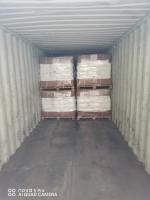Our Products
Polyacrylamide / The equivalent model of Praestol 655 BC can be replaced BY Chinafloc C6014

Cationic polyacrylamide is one of the most widely used water-soluble polymers in industrial water treatment, municipal wastewater treatment, sludge conditioning, papermaking, mining processes, and various solid–liquid separation operations. The reason cationic polyacrylamide is so versatile lies in its strong positive charge density, high molecular weight, excellent bridging ability, and its ability to bind effectively with negatively charged colloids, organic particles, biological sludge, and mineral suspensions. Below is a comprehensive explanation of the main applications of cationic polyacrylamide, covering 998 words of detailed, industry-oriented content.
1. Municipal Wastewater Treatment ApplicationsPraestol 655 BC
One of the most important applications of cationic polyacrylamide is in municipal sewage treatment plants. Municipal wastewater contains a large amount of negatively charged suspended solids, organic matter, microbial flocs, and colloidal impurities. Cationic polyacrylamide provides strong charge neutralization and polymer bridging, enabling these fine particles to aggregate into larger flocs that can be removed efficiently in clarification and sludge dewatering processes.
In primary clarification, cationic polyacrylamide helps accelerate the sedimentation rate of suspended solids, reducing turbidity and improving effluent quality. In biological treatment stages, cationic polyacrylamide enhances secondary settling by increasing floc compactness. The most significant municipal application is sludge dewatering, where cationic polyacrylamide is dosed into digested sludge or waste activated sludge before mechanical dewatering machines such as belt filter presses, centrifuges, chamber filter presses, or screw presses. By strengthening sludge floc structure, water is released more easily, producing higher cake solids and reducing sludge disposal costs.
2. Industrial Wastewater Treatment Applications
Cationic polyacrylamide is widely used in wastewater from industries such as food processing, fermentation, sugar production, slaughterhouses, tanneries, pharmaceuticals, petrochemicals, textiles, and dyeing plants. Many of these effluents contain high concentrations of negatively charged organic colloids. Cationic polyacrylamide works as the primary flocculant or as a coagulant aid after inorganic coagulants such as PAC and alum.
In oily wastewater generated from petrochemical and refinery operations, cationic polyacrylamide helps break oil–water emulsions and flocculate suspended oils. In chemical manufacturing facilities, cationic polyacrylamide helps reduce COD, BOD, and TSS in treatment processes. Its effectiveness in removing dyes and pigments makes it useful in textile wastewater treatment.
3. Sludge Thickening and Dewatering for Industrial SludgePraestol 655 BC
Industrial sludge is often more difficult to dewater compared with municipal sludge due to the presence of stabilized emulsions, complex organic compounds, and fine particles. Cationic polyacrylamide, particularly high-cationic grades, enhances sludge flocculation and improves filtration efficiency. In many industries, dewatering polymer costs are offset by reduced transportation and landfill fees.
Cationic polyacrylamide with medium to high charge density is particularly effective for paper mill sludge, food industry sludge, and chemical sludge that has a high content of organic impurities. The polymer improves filterability, reduces moisture content in the sludge cake, and enhances operation stability of centrifuges and belt presses.
4. Papermaking Applications
In the paper industry, cationic polyacrylamide has critical roles in retention, drainage, and dry strength enhancement.
Retention and Drainage AidPraestol 655 BC
Cationic polyacrylamide is used in the wet end of paper machines to improve retention of fine fibers, fillers (such as kaolin, PCC, GCC), and pigments. The positive charge interacts with the negatively charged pulp fibers, enhancing aggregation and preventing loss of valuable materials through the wire section. Better drainage also leads to faster machine speeds and reduced energy consumption in drying sections.
Dry Strength Agent
Cationic polyacrylamide can also serve as a dry strength resin. It increases hydrogen bonding between fibers and improves internal bonding strength. This enhances tensile strength, burst strength, and fold resistance of paper products. High-purity food-contact grades are used in tissue paper, packaging paper, and specialty paper.
5. Mining and Mineral Processing ApplicationsPraestol 655 BC
Cationic polyacrylamide is used in mining where the ore or processing water contains negatively charged particles. Its primary applications include:
-
Tailings flocculation
-
Solid–liquid separation after flotation
-
Thickening of fine mineral slurries
-
Clarification of recycle process water
In coal washing plants, cationic polyacrylamide helps dewater fine coal tailings and clarify coal slurry water. In phosphoric acid plants, it supports clarification of phosphate ore suspensions. Cationic polyacrylamide is less common than anionic grades in mining but is essential where organic-rich slurries or negatively charged materials dominate.
6. Oil & Gas, Drilling, and Enhanced Oil Recovery
In the petroleum industry, cationic polyacrylamide is used in produced water treatment, polymer flooding, and drilling fluids.
-
In produced water treatment, it helps remove oil droplets and suspended solids.
-
In drilling muds, cationic polyacrylamide functions as a shale inhibitor, reducing clay swelling.
-
In enhanced oil recovery (EOR), cationic polyacrylamide improves viscosity and mobility control in low-salinity reservoirs.
Its resistance to salinity and effectiveness at low dosages make it valuable in upstream operations.
7. Textile and Dyeing Industry ApplicationsPraestol 655 BC
Textile wastewaters contain dyes, surfactants, and organic impurities that are often negatively charged. Cationic polyacrylamide improves the flocculation of dye molecules, enabling high-rate clarification and color removal. It also assists in sludge dewatering and enhances sedimentation in dye bath waste treatment.
8. Agriculture and Soil Conditioning
Although less common, cationic polyacrylamide can be used in soil conditioning and erosion control. Its positive charge helps bind soil particles and improve soil aggregation. In agricultural wastewater systems such as livestock farms, cationic polyacrylamide helps remove organic matter and suspended solids from manure lagoons or biogas digestate.
9. Chemical Plants and Organic Waste Treatment
In chemical manufacturing industries, especially those producing resins, plastics, pharmaceuticals, and organic solvents, cationic polyacrylamide is used for:
-
Organic wastewater flocculation
-
Biological treatment enhancement
-
Sludge dewatering
-
COD reduction through solid capture
Its strong charge neutralization makes it ideal for stability-challenging waste streams.
10. General Solid–Liquid Separation Processes
In any process that requires rapid solid–liquid separation, cationic polyacrylamide can be applied, including:
-
Sedimentation
-
Clarification
-
Thickening
-
Filtration
-
Centrifugation
Its high molecular weight enables large floc formation, accelerating separation efficiency.





